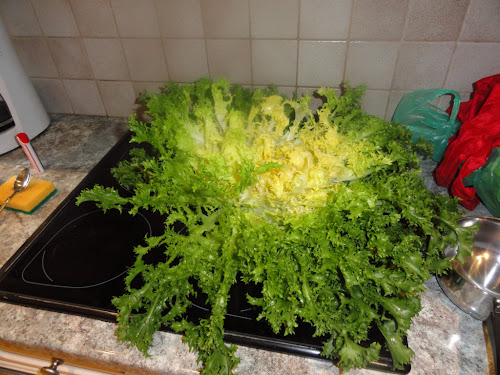This has not been a gardener's spring. We are trying to get our DC house ready for sale, and I have been missing in action from the garden. However, I am here for two weeks and last night reveled in fresh asparagus. I want to post this recipe I tried. The lemon zest really brightens it up. I used what we call Maine shrimp ... a North Atlantic shrimp that is small and briny. Also I substituted zucchini noodles for fettuccine ... You can make them with a spiralizer, or simply use a potato peeler
Lemon-pepper
fettuccine with asparagus and shrimp
Serves 6
Salt and pepper, to taste 1 pound
asparagus, trimmed and cut into 2-inch lengths 1 pound fettuccine 3 tablespoons olive oil 30 large shrimp, peeled and deveined 2 cloves garlic, finely chopped 1/2 cup grated Parmesan cheese 2 tablespoons chopped fresh parsley Finely grated rind of 2 lemons
1. Bring a pot of salted water to a boil. Drop in the
asparagus and cook 1 minute until tender-crisp. Remove the asparagus with a
slotted spoon and plunge into a bowl of ice water.
2. Bring the water back to a boil, drop in the
fettuccine, and cook for 8 to 10 minutes or until tender. Drain the pasta,
reserving 1/2 cup of the cooking liquid.
3. Meanwhile, in a large nonstick skillet over high
heat, heat 1 tablespoon of the olive oil. Add the shrimp, garlic, salt, and
pepper, and cook for 1 minute. Add the asparagus and cook 2 minutes or until
the shrimp are cooked through and the asparagus is warmed.
4. Return the pasta to the pot and toss it with half of
the Parmesan, half of the parsley, the lemon rind, remaining olive oil, and
reserved cooking liquid. Season with salt and a generous sprinkling of pepper.
5. Divide the pasta among 6 warm bowls. Arrange the
shrimp and asparagus on top and sprinkle with the remaining Parmesan cheese and
parsley.
Adapted from "Fast & Fit."














































